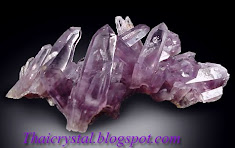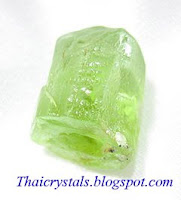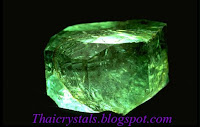Peridot (pronounced) is gem-quality forsteritic olivine. The chemical composition of peridot is (Mg, Fe)2SiO4, with Mg in greater quantities than Fe.
The origin of the name "peridot" is uncertain. The Oxford English Dictionary suggests an alteration of Anglo-Norman pedoretes (classical Latin paederot-), a kind of opal, rather than the Arabic word faridat, meaning "gem".
Olivine in general is a very abundant mineral, but gem quality peridot is rather rare.
Peridot is one of the few gemstones that occur in only one color: basically an olive green. The intensity and tint of the green however depends on how much iron is contained in the crystal structure, so the color of individual peridot gems can vary from yellow-green through olive green to brownish green. The most valuable is considered a dark-olive green color.
Peridot crystals have been collected from some Pallasite meteorites. A famous Pallasite was offered for auction in April 2008 with a requested price of close to $ 3 million at Bonhams, but remained unsold. Peridot is the only gemstone found in meteorites.
Peridot olivine is the birthstone for August. It is sometimes mistaken for emeralds and other green gems. In fact notable gemologist George Frederick Kunz discussed the confusion between emeralds and peridots in many church treasures, notably the "Three Magi" treasure in the Dom of Cologne, Germany.

Custom Search

















































